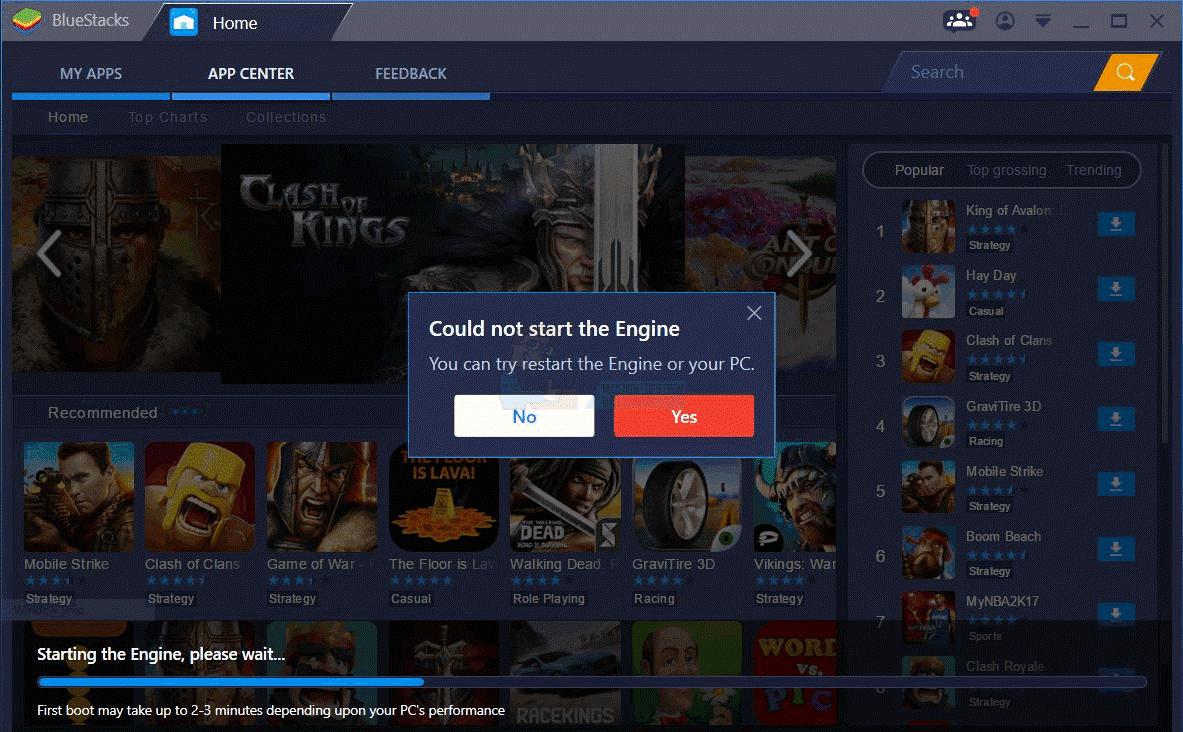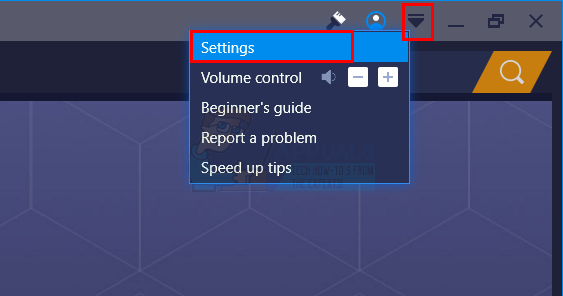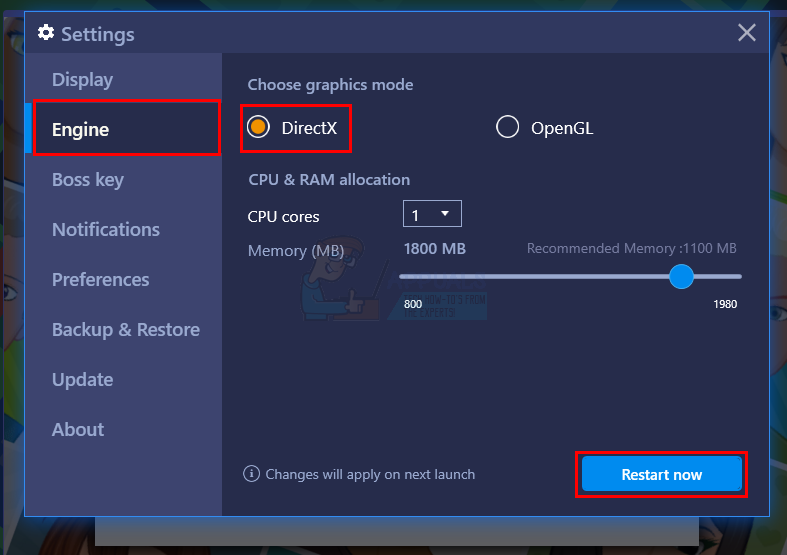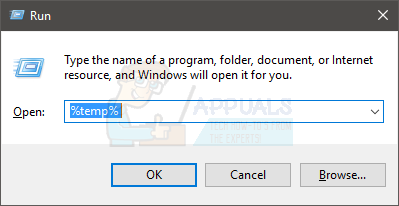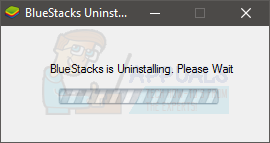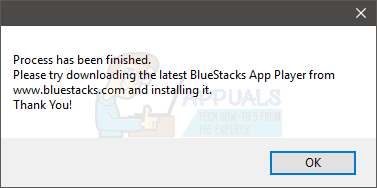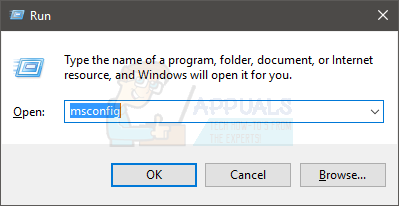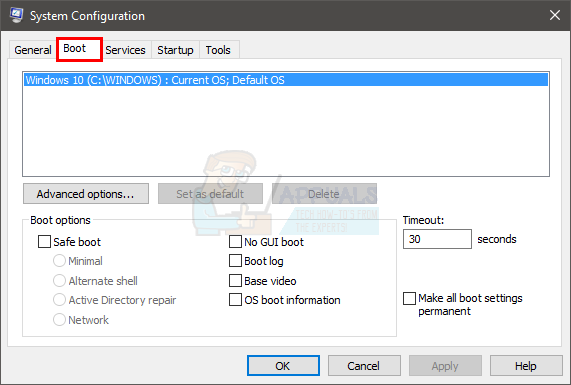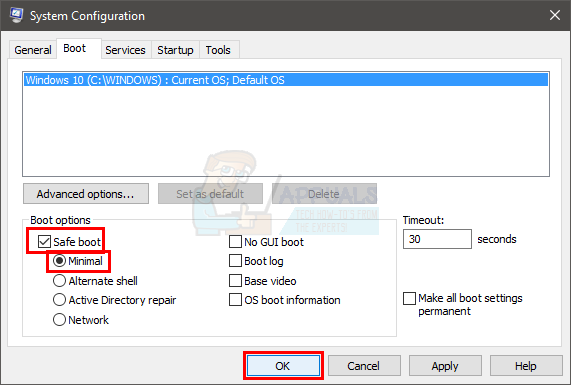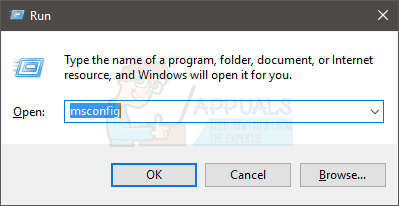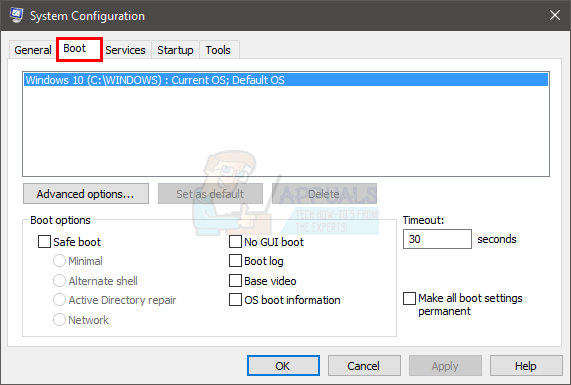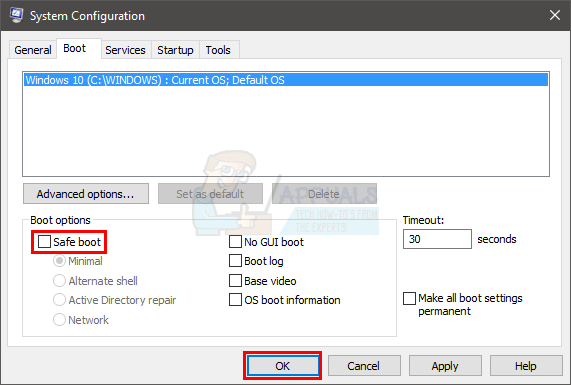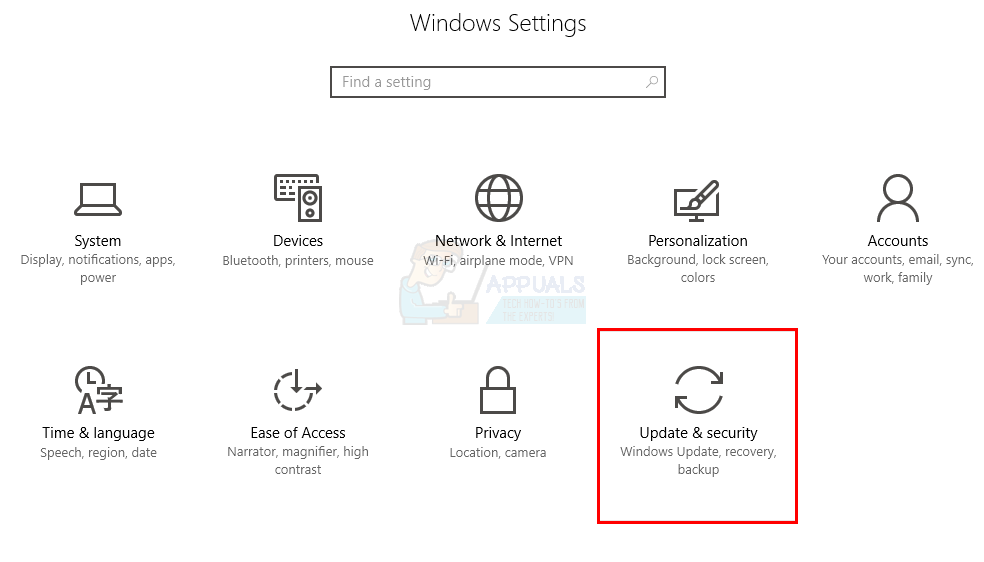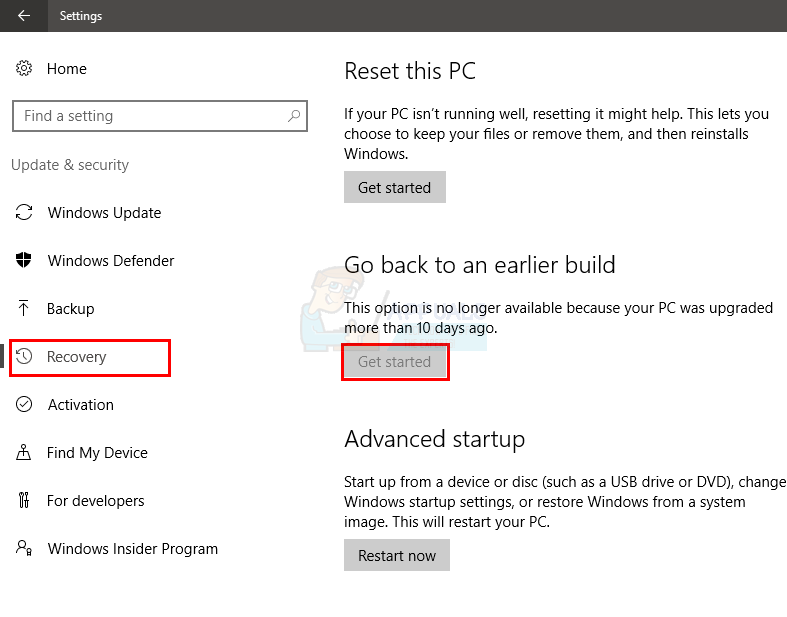This error message usually appears after installing the BlueStacks update. A lot of users started seeing this error when they updated the BlueStacks to the newer version. So, the usually cause of this error is a bug in the update. For some users, this might happen after the Windows update as well. Again, it points to a bug in the Windows or BlueStacks update. In rare cases, the problem can caused by improper settings and/or disabled virtualization technology.
Tip
Try turning off the antivirus application especially if you have Avast. There is usually a disable option. Simply right click the antivirus icon from the system tray and select the option Disable. Disable the application for a short time and check if BlueStacks work in that period. If it works fine then the issue is simply because of the security application. Switching to a different security application will prevent these problems in the future.
Method 1: Switch to DirectX and change RAM capacity
In the engine settings of BlueStacks, you will have an option of using OpenGL or DirectX. By default, BlueStacks will be using the OpenGL and this option will be selected. Swtiching to DirectX and rebooting usually solves this issue. Follow the steps given below to switch to DirectX
Check if the problem is resolved or not. If the problem still persists then follow all the steps given above (but do not click Restart Now button). One you have selected DirectX option, change the Core number from the drop down menu and try different RAM capacity settings. Once done, click Restart Now and check if this resolves the issue. Sometimes a different RAM settings aired with DirectX resolves the issue.
Method 2: Enable Virtualization Technology
Making sure that the Virtualization is enabled on your PC also helps in resolving this issue. A lot of users solved the problem by simply turning on the Virtualization option from the BIOS. Virtualization, if you don’t know, basically gives Intel hardware a boost while virtualizing and helps BlueStacks run smoother and faster. But, before you enable the Virtualization technology, let’s first check whether your system supports this technology or not. Here are the steps for checking whether the Virtualization Technology is available or not. Note: There are different ways of checking the availability depending on your processor. So, if you have an Intel processor then follow the instructions in that section. On the other hand, if you have an AMD processor then skip the Intel section and go to AMD section and follow the instruction given there. For Intel Users For AMD Users If your system is compatible then continue otherwise skip this method. So, here are the steps for enabling the Virtualization Technology. You should be good to go on your next startup.
Method 3: Completely Uninstall and Reinstall
Simply uninstalling and reinstalling the BlueStacks resolves the issue as well. So, here are the steps for completely uninstalling and then reinstalling the BlueStacks.
Your computer should start in normal mode. Check if BlueStacks is working properly or not.
Method 4: Revert back to previous build
If you started experiencing the problem after a Windows update then, clearly, the problem is with the latest Windows build. In this scenario, the only option for you is to revert back to the previous build and wait for the Windows update that doesn’t cause this issue. Note: There is a certain time limit (10 days) in which you can revert back to the previous build after a Windows update. So, keep that in mind because this option won’t always be available. Here are the steps for reverting back to the previous build
How to Fix the Corsair Utility Engine won’t Open on Windows?Fix: Bluestacks Snapchat Not WorkingFix: Failed to Load Channels in BluestacksFix: Bluestacks crashing on Windows 10
